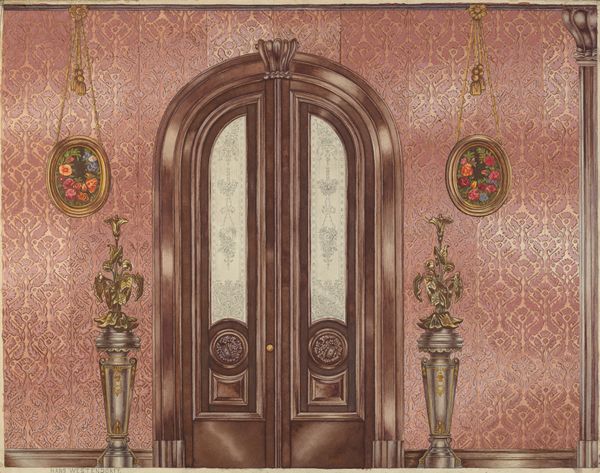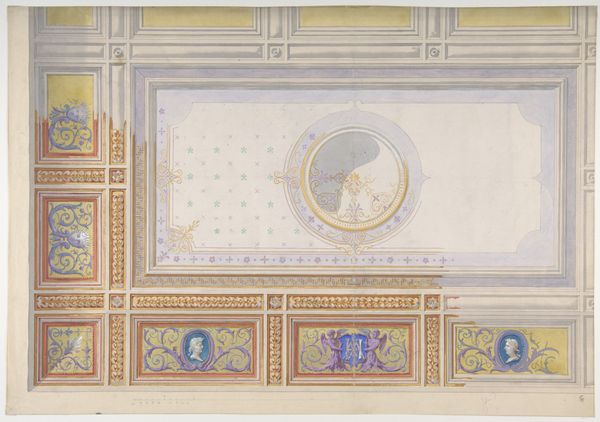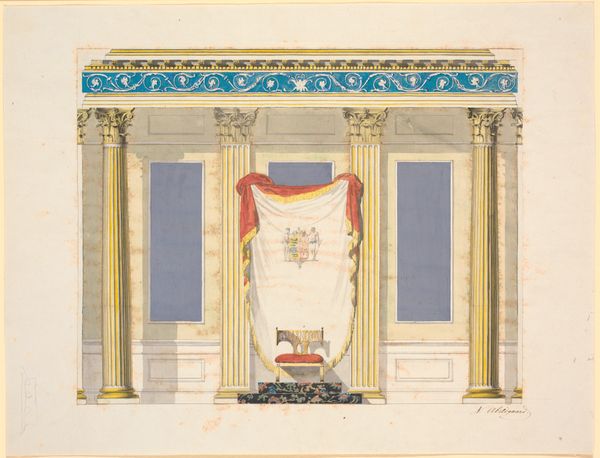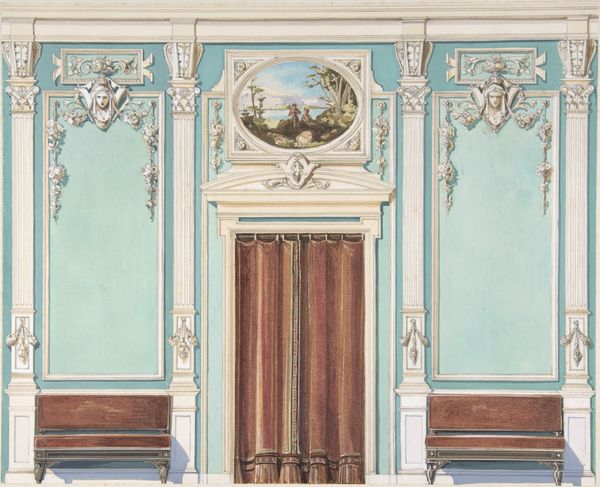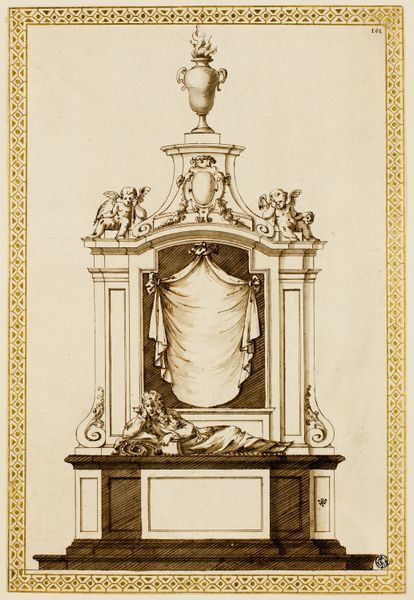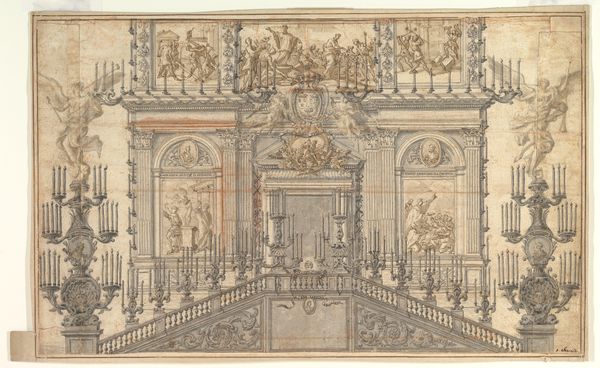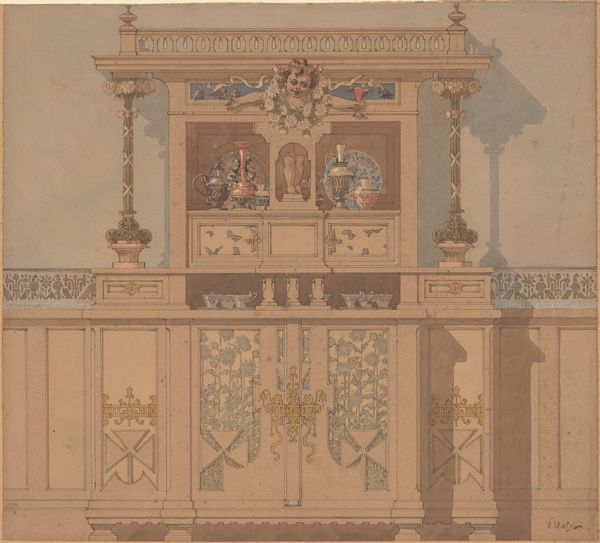
Interior Design with a Central Door Covered by Green Drapery and Two Cabinets 1880 - 1900
0:00
0:00
Dimensions: sheet: 9 1/2 x 12 in. (24.1 x 30.5 cm)
Copyright: Public Domain
Curator: Welcome. We're looking at "Interior Design with a Central Door Covered by Green Drapery and Two Cabinets," a watercolor and graphite drawing likely created between 1880 and 1900. It’s currently held at the Metropolitan Museum of Art. Editor: It strikes me as formally serene. The careful symmetry, the muted colors—there’s a real sense of calculated elegance, or is it restraint? Curator: Well, given the timeframe and the subject matter, it most likely depicts a Neoclassical interior. We see an emphasis on balanced composition, typical for its aspirations to return to the ‘purity’ of classical antiquity in decorative schemes. We might also examine the labor involved in producing the furniture as well as how they reflect consumer culture for the elite back in the time. Editor: I see your point, but can we stick with the aesthetics a bit longer? Note the gentle wash of color and line; observe how the verticals and horizontals structure the composition, and what kind of formal decisions are implied by placing, say, that clock? Curator: I cannot but also see it within a matrix of production, patronage, and consumption. We could also try to trace the specific source for that type of furniture in interior design magazines. Editor: Granted, that’s interesting, but it threatens to obscure what is, after all, an aesthetic accomplishment. Think of how the simple geometry interacts with the subtle coloring; the flat shapes somehow create depth... Curator: Do they, or is this 'depth' purely illusionistic, designed to conceal the economic realities undergirding such a display of refined taste? What kind of woodwork went into making the real piece of furniture, how much was the drapery, and what kinds of labor conditions made all of it possible? The watercolor is but a part of this whole network of socioeconomic and political history. Editor: Yes, and it’s a lovely watercolor precisely because of its aesthetic qualities—qualities that you’re attempting to dissolve into social theory! I guess we simply disagree on where the artistic value resides. Curator: Perhaps...or perhaps we’re just foregrounding different, but equally relevant, aspects of its complex existence as both a thing of beauty and an object produced within a specific material reality. Editor: Agreed. I remain firm about its aesthetics though. Thank you for sharing that vision, I am coming to terms with some blind spots in my thinking.
Comments
No comments
Be the first to comment and join the conversation on the ultimate creative platform.



